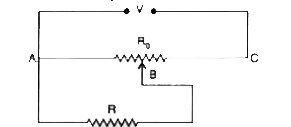An electron and a photon each have a wavelength of nm. Find (i) their momentum (ii) the energy of the photon and (iii) K.E of electron Solution in Kannada
(i) For electron or photon, momentum
(ii) Energy of photon
(iii) Kinetic energy of electron
Topper's Solved these Questions
- DUAL NATURE OF RADIATION AND MATTERBOOK - OSWAAL PUBLICATIONCHAPTER - DUAL NATURE OF RADIATION AND MATTEREXERCISE - TOPIC-2 DE-BROGLIE RELATION (LONG ANSWER TYPE QUESTIONS)
1 Videos
- DUAL NATURE OF RADIATION AND MATTERBOOK - OSWAAL PUBLICATIONCHAPTER - DUAL NATURE OF RADIATION AND MATTEREXERCISE - TOPIC-2 DE-BROGLIE RELATION (NUMERICAL PROBLEMS)
7 Videos
- DUAL NATURE OF RADIATION AND MATTERBOOK - OSWAAL PUBLICATIONCHAPTER - DUAL NATURE OF RADIATION AND MATTEREXERCISE - TOPIC-2 DE-BROGLIE RELATION (SHORT ANSWER TYPE QUESTIONS-I)
9 Videos
- CURRENT ELECTRICITY BOOK - OSWAAL PUBLICATIONCHAPTER - CURRENT ELECTRICITY EXERCISE - TOPIC-3 (POTENTIOMETER & APPLICATIONS) (NUMERICAL PROBLEMS)
2 Videos
- ELECTRIC CHARGES & FIELDSBOOK - OSWAAL PUBLICATIONCHAPTER - ELECTRIC CHARGES & FIELDSEXERCISE - (TOPIC -2)Numerical Problems
5 Videos
Similar Questions
What are matter waves? Derive an expression for the de Broglie wave length.
View SolutionCalculate de-Broglie wavelength associated with a rifle bullet of mass 2 gram moving with a speed of 400ms−1.
View SolutionWhat are matter waves? Derive an expression for the de Broglie wave length.
View SolutionA resistance of RΩ draws current from a potentiometer. The potentiometer has a total resistance R0Ω.A voltage V is supplied to the potentiometer. Derive an expression for the voltage across R when the sliding contact is in the middle of the potentiometer.

View SolutionAn atom was earlier assumed to be sphere of radius a having a positively charged point nucleus of charge +Ze at its centre . This nucleus was believed to be surrounded by a uniform desity of negative charge that made the atom neutral as a whole.
Use this theorem to find the electric field of this atom at a distance r(r>a) from the centre of the atom.
View SolutionAn electron and a photon each have a wavelength 1.00 nm. Find
(i) their momenta,
(ii) the energy of the photon and
(iii) the kinetic energy of electron.
View SolutionAn electron and a photon each have a wavelength of 1.50 nm. Find (i) their momenta, (ii) the energy of the photon and (iii) kinetic energy of the electron.
View Solutionएक इलेक्ट्रॉन और एक फोटॉन प्रत्येक का तरंगदैर्घ्य 1.00 नैनोमीटर है ।
(a ) इनका संवेग ,
(b ) फोटॉन की ऊर्जा , और
(c ) इलेक्ट्रॉन की गतिज ऊर्जा ज्ञात कीजिए ।
View Solutionएक एलेक्ट्रोन और एक फोटोन प्रत्येक का तरंगदारिद्य 1.00 नैनोमीटर है
(a) इनका संवेग
(b) फोटोन की ऊर्जा असूर
(c ) इलेक्ट्रान की गतिज ऊर्जा ज्ञात कीजिए
View SolutionThe wavelength of each of a photon and an electron is 1.00 nm. Find their (a) momentum and (b) energy.
View SolutionAn electron and a photon each have a wavelength of 1.00 nm. Find (i) their momentum (ii) the energy of the photon and (iii) K.E of electron
View SolutionAn electron and a photon each have a wavelength of 1.00 nm. Find
a. their momenta,
b. the energy of the photon, and
c. the kinetic energy of electron.
View Solutionএকটি ইলেকট্রন ও একটি ফোটনের প্রতিটির তরঙ্গদৈর্ঘ্য 1.00 nm । এদের ভরবেগ এবং শক্তি নির্ণয় করো |
View SolutionAn electron and a photon each have a wavelength of 1.00 nm. Find (a) their momenta, (b) the energy of the photon, and (c) the kinetic energy of electron.
View SolutionAn electron and a photon each have a wavelength of 1.00 nm. Find
(a) their momenta,
(b) the energy of the photon, and
(c) the kinetic energy of electron.
View Solution
